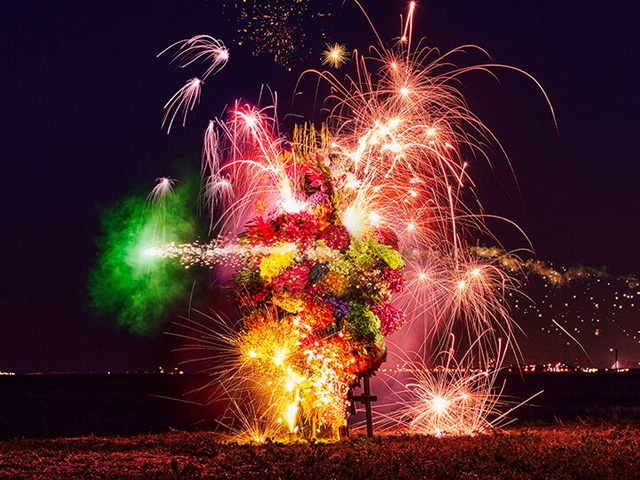LANEWAY ART TO ENHANCE SYDNEY
18 Oct 2016
Sydney seeks to reveal its secrets and create a livelier and more walkable city through public artworks that will revitalise well used laneways in areas to the north and south of the city centre.

Visitors will soon be able to explore the secrets of Sydney’s past with major public artworks set to appear in three inner-city laneways.


The City of Sydney is seeking proposals from local and international artists for permanent artworks in laneways in the north and south of the city centre.
Lord Mayor Clover Moore said the latest artworks were part of a long-term project to revitalise Sydney’s laneways and create a livelier city.
“We’re inviting ideas from artists on how they would transform these three laneways in the heart of Sydney into sites that encourage visitors to take a look, explore a little of Sydney’s past and spend time in our city centre,” the Lord Mayor said.
“We’re hoping the ideas put forward for these lanes will inspire even more creativity in our city – and encourage people to stop in at local shops.”
There are 57 lanes crisscrossing Sydney, each bearing its own unique story. Some represent the traditional lands of the Gadigal people and the original paths of colonial Sydney. Others are former service lanes for factories and manufacturers, while some remain popular paths for people walking through the city centre.
The laneway art proposal is part of the City’s public art plan to enliven city spaces, overseen by the city centre public art curator, Barbara Flynn.
The City will fund up to three projects. Artists can choose from five laneway locations in the city centre:
- Reiby Place
- Curtin Place – Hamilton Street – Little Hunter Street
- Council Place
- Market Row – Mullins Street
- Parker Lane
“We’re looking for creative proposals that reflect an understanding of our city, its history, future and all it has to offer,” the Lord Mayor said.
Submissions for ‘Expressions of Interest’ have just closed. Up to eight artists will be shortlisted from these submissions and assisted to develop their ideas as part of the second stage.
THE LANEWAYS
REIBY PLACE
Reiby Place commemorates Mary Reiby, the legendary businesswomen of colonial Sydney. Now the face of the Australian $20 note, Mary Reiby (née Haydock) was born on 12 May 1777 in Bury, Lancashire, England. At the age of 13 she was found guilty of stealing a horse and was transported to New South Wales as a convict. In 1794, she married Thomas Reiby, an Irishman in the service of the East India Company, who later set up his own trading house. Following her husband’s death in 1811, the widowed Reiby was not only left with seven children, but a number of businesses to manage. She proved to be an astute businesswoman and rose to prominence in early Sydney life.
CURTIN PLACE – HAMILTON STREET – LITTLE HUNTER STREET
Formerly Little George Street, Curtin Place forms the southern boundary of Harry Seidler’s iconic Australian Square. Named after Prime Minister John Curtin, who served from 1941–45, the laneway connects with Hamilton Street and Little Hunter Street. Hamilton Street was constructed in the 1860s and named after Hamilton’s steam biscuit factory located on the site. The alignment of Hamilton Street followed the Tank Stream.
COUNCIL PLACE
Once the city’s furniture precinct, Council Place features commercial and warehouse buildings of five to eight storeys, dating back to the 19th and early 20th centuries. The precinct was once dominated by Lassetter & Co, one of the original and largest department stores in Sydney. While the businesses operating in this area have changed over time, configuration of the laneway largely remains the same. Flanked by sandstone and brick warehouses, the intimate Council Place is a quiet retreat from the busy streets of modern Sydney.
MARKET ROW – MULLINS STREET
The intersecting lanes of Market Row and Mullins Street are surrounded by a number of 19th century buildings. It is likely that Market Row was named after the nearby markets established by Governor Macquarie in 1810. The site was later transformed by the City of Sydney into the Queen Victoria Markets Building. In 1905, Mullins Street was named after a local politician, lawyer and patron of the arts, John Lane Mullins. Today, Mullins Street continues to support the arts, offering up a wealth of authentic textures and notable visual details that will significantly contribute to public art projects.
PARKER LANE
In the southern area of the city in Chinatown, Parker Lane retains the gritty qualities of an active rear lane servicing local businesses. The eastern side is flanked by the Brutalist-style Haymarket Telephone Exchange tower, built in the 1970s. A number of heritage buildings surround Parker Lane, including the Corporation Building of 1895, designed by the Queen Victoria Building architect George McRae. Originally a market building, it is now home to 4A Centre for Contemporary Asian Art. On the opposite side of the lane, the Italianate–Gothic Commonwealth Banking Corporation building of 1875 is also of heritage significance.
Images (top to bottom): Angel Place, Sydney; Sydney Art & About 2011, Deconstructing Ways by Isidro Blasco; Sydney Art & About 2012, Peri(pheral) Scopes by Heidi Axelsen, Hugo Moline and Adriano Pupilli.







